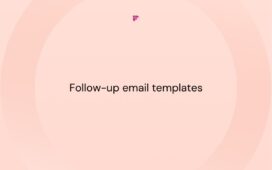The Importance of Crafting Persuasive Messages
In today’s digital age, cold emailing has become an essential tool for businesses and professionals to connect with potential clients and partners. However, with inboxes flooded with countless emails every day, it is crucial to craft persuasive messages that stand out and grab the recipient’s attention. A well-crafted cold email can make all the difference in generating a positive response and ultimately achieving your desired results.
One of the main reasons why crafting persuasive messages is important in cold emailing is because it helps you make a strong first impression. When you reach out to someone you don’t know, you have a limited window of opportunity to capture their interest and convince them to take action. By using persuasive language and compelling arguments, you can increase the chances of your email being read and receiving a reply.
Another key reason to focus on crafting persuasive messages is to overcome the natural skepticism and resistance that recipients may have towards cold emails. Most people are wary of unsolicited emails and have developed a habit of ignoring or deleting them without a second thought. By employing persuasive techniques, such as addressing the recipient’s pain points or offering a unique value proposition, you can break through their defenses and pique their curiosity.
It can be interesting for you – https://reply.io/email-template-categories/marketing/.
Understanding the Psychology of Cold Email Recipients
To craft persuasive cold email templates, it is essential to have a deep understanding of the psychology of the recipients. When someone receives a cold email, they are usually busy and overwhelmed with other tasks. They are looking for a reason to ignore or delete your email. However, by understanding their motivations and preferences, you can tailor your message to resonate with them on a personal level.
One psychological aspect to consider is the concept of social proof. People are more likely to take action if they see that others have already done so. Incorporating testimonials or success stories from your existing clients or partners can help establish credibility and build trust. Additionally, appealing to the recipient’s desire for recognition and status can be a powerful motivator. Highlighting how your product or service can elevate their personal or professional standing can greatly increase the chances of a positive response.
Another important psychological factor to consider is the fear of missing out. By creating a sense of urgency or scarcity in your email, you can tap into this fear and push the recipient to take immediate action. Limited-time offers, exclusive discounts, or early access to valuable content can all create a sense of urgency and drive the recipient to respond.
Key Elements of an Effective Cold Email Template
Crafting a persuasive cold email template involves several key elements that work together to create a compelling message. Here are some essential components to consider when creating your template:
Subject Line
The subject line is the first thing recipients see when they receive your email, and it plays a crucial role in capturing their attention. A persuasive subject line should be concise, intriguing, and personalized. Avoid generic subject lines that are likely to be ignored or marked as spam. Instead, use the recipient’s name or mention a specific pain point or benefit to pique their curiosity and entice them to open your email.
Personalization
Personalization is a powerful tool in cold emailing. By addressing the recipient by their name and referencing specific details about their business or interests, you can create a sense of familiarity and make your email feel more relevant and tailored to their needs. Generic, one-size-fits-all emails are easily recognized and often disregarded. Take the time to research and understand your recipients to make your message more personal and engaging.
Value Proposition
Your cold email should clearly communicate the value you can provide to the recipient. What problem can you solve for them? How can your product or service benefit their business or life? Clearly articulate the unique value proposition and highlight the specific advantages they will gain by engaging with you. Focus on the benefits rather than the features, as recipients are more interested in what they stand to gain.
Call-to-Action
Every persuasive cold email should include a clear and compelling call-to-action (CTA). The CTA is the desired action you want the recipient to take, whether it’s scheduling a call, signing up for a demo, or requesting more information. Make the CTA stand out by using action words and creating a sense of urgency. Provide a simple and direct way for the recipient to respond, such as a link or a reply button.
Conclusion
Crafting persuasive cold email templates is an essential skill for anyone looking to generate results in their outreach efforts. By understanding the importance of persuasive messages, tapping into the psychology of recipients, and incorporating key elements in your templates, you can increase your chances of getting noticed and receiving a positive response. Remember to always personalize your emails, clearly communicate the value you offer, and include a compelling call-to-action. With these strategies in place, you’ll be well on your way to achieving success through cold emailing.
Are you ready to take your cold emailing to the next level? Start crafting persuasive messages today and see the results for yourself!
It can be interesting for you – https://reply.io/email-template-categories/pr-and-link-building/.







